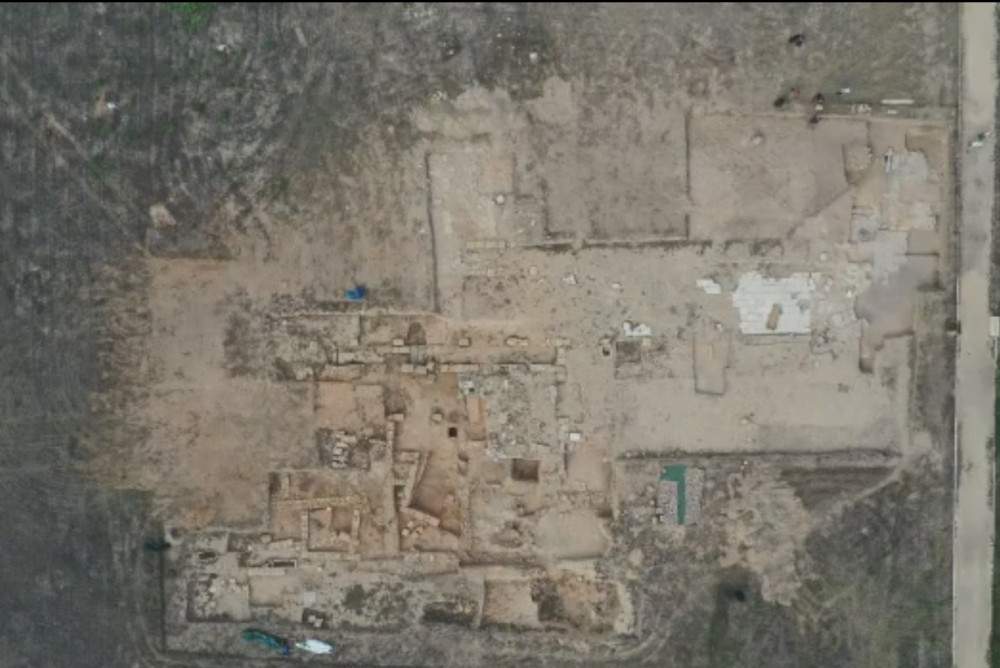Sicily, excavations unearth urban elements of ancient Punic-Hellenistic city of Lilybaeum-Marsala
Newfindings during the new excavation campaign underway at the Lilybaeum-Marsala Archaeological Park conducted by the University of Geneva: the findings concern the topography and urban planning of the Punic-Hellenistic and Roman city.
Conducted by archaeologist Alessia Mistretta, the investigations uncovered a stenopus: a junction with the east/west oriented Plateia that had been unearthed during the 2017 excavations conducted by the same archaeologist together with Lorenz Baumer; thus, it is a finding that adds new and significant elements of knowledge to the layout of theancient urban structure.
Part of a mighty structure in blocks of equal height and size related to a cult area that, according to the hypothesis of the same archaeologist, who is conducting the investigation, must have represented the first Punic sacellum of the Carthaginian city, was also found in the extension of the excavation.
The excavation was started in early September with the aim of completing and bringing to light the plan module of one of the blocks of the Punic-Hellenistic colony of the ancient city.
“This season,” commented Regional Councillor for Cultural Heritage and Sicilian Identity Alberto Samonà, “continues to yield important results for the quantity and quality of the discoveries made throughout Sicily and strengthens us in the awareness that the strengthening of research activity is an element of priority importance in the knowledge of the territories and in the cultural enhancement activity of the island.”
The excavation campaigns, conducted in 2017 by Lorenz Baumer and Alessia Mistretta, had uncovered one of the road axes of the late imperial age, a new Plateia oriented in an East/West direction, made with regular and perfectly preserved basalt tiles as well as a monumental building complex articulated on two levels and composed of at least six rooms served by a canalization system that seems to have been in use at least since the late republican period (40-20 BC).
The campaign carried out by the Classical Archaeology Unit of the University of Geneva is one of two survey campaigns underway these days in Marsala; the other is conducted by the Universities of Hamburg and Palermo and aims at the realization of the ’Archaeological Map of Lilybaeum,’ aimed at the detailed reconstruction of the settlement and the vast necropolis of the ancient city: an important survey tool not only for archaeologists, but also for institutions and professionals who have to carry out maintenance and planning interventions within the historic center. The latter, coordinated by Martina Seifert of the Institute of Archaeology at the University of Hamburg, Antonella Mandruzzato of the Department of Culture and Society and Mauro Lo Brutto of the Department of Engineering at the University of Palermo, is in charge of carrying out the survey of the monumental necropolis of Via del Fante and the remains of the Domus of Via delle Ninfe. Topographical survey techniques integrated with aerophotogrammetric surveys carried out with the use of a ’drone’ (Remotely Piloted Aircraft System) and laser scanners are being used to carry out the undertaking, allowing three-dimensional reconstruction of some monumental contexts.
“The resumption of the Projet Lilybée excavation campaigns within the Park area with the flattering results obtained so far,” says the director of the Lilybaeum Archaeological Park, Anna Maria Parrinello, “is cause for great enthusiasm and brings the attention of the scientific world back to our territory. Moreover, the survey campaign for the realization of the Archaeological Map marks the beginning of research in the urban area, while the survey of the emergencies present in the Capo Boeo area has been carried out during previous missions, since 2017. An ambitious and important goal to make our territory more intelligible.”
 |
| Sicily, excavations unearth urban elements of ancient Punic-Hellenistic city of Lilybaeum-Marsala |
Warning: the translation into English of the original Italian article was created using automatic tools. We undertake to review all articles, but we do not guarantee the total absence of inaccuracies in the translation due to the program. You can find the original by clicking on the ITA button. If you find any mistake,please contact us.



























